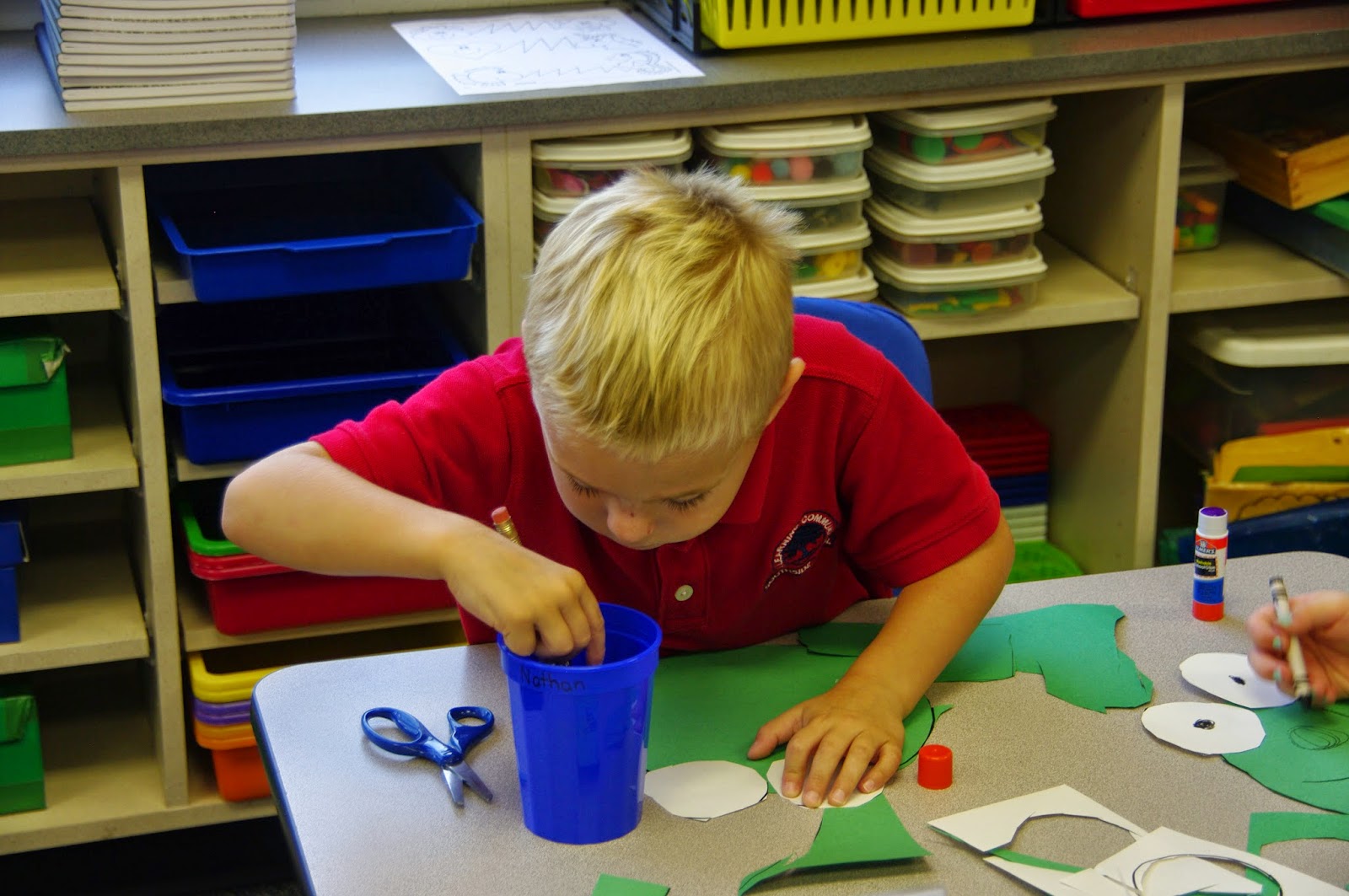Our school wide focus this year is Math! We are changing the way we teach and the materials we use.
We are teaching Math by the Florida Standards this year. For the first marking period we will be working on these standards:
CLUSTER – Identify and describe shapes, (squares,
circles, triangles, rectangles, hexagons, cubes, cones, cylinders, and
spheres).
Describe objects in the environment using names of
shapes, and describe the relative positions of these objects using terms such
as above, below, beside, in front of, behind, and next to.
Correctly name shapes regardless of their orientations or
overall size.
Identify shapes as two-dimensional (lying in a plane,
“flat”) or three-dimensional (“solid”).
CLUSTER - Know Number Names and the Count Sequence
Count to 100 by ones and by tens
Count forward beginning from a given number
within the known sequence (instead of having to begin at 1)
Write numbers from 0 to 20. Represent a number of objects with a written
numeral 0-20 (with 0 representing a count of no objects) (through 10)
a.When counting objects, say the number names
in the standard order, pairing each object with one and only one number name
and each number name with one and only one object.
b.Understand that the last number name said
tells the number of objects counted. The
number of objects is the same regardless of their arrangement or the order in
which they were counted.
c. Understand that each successive number name
refers to a quantity that is one larger.
Count to answer “how many?” questions about as
many as 20 things arranged in a line, a rectangular array, or a circle, or as
many as 10 things in a scattered configuration; given a number from 1-20, count
out that many objects.
CLUSTER - Classify objects and count the number of objects in each
category.
Classify objects into given categories; count
the numbers of objects in each category and sort the categories by count.
Basically we will be working on shapes and the numbers to 10.
So what does this actually mean? We had been using the Envision Math Program and we followed this program from start to finish. This year we are using the Envision program as one of our resources for teaching Math and not solely relying on that. I am excited about teaching Math this year, it is harder to do it this way, it is a lot more planning on my part, but it will also give me the freedom to address the needs of the children better.
These math pages are from our Envision Math Program
So what are we doing?????
We are doing a lot of Problem Solving with our Problem of the Day. This can either be a problem I present on the activboard, that we work through together orally, or it can be a problem that we put into our Math Problem Solving Notebooks. In the Math Problem Solving notebook, we will be exploring different strategies to solve problems. As Mr. Dragon says, "We will be thinking, talking and writing about Math every day!"
For kindergarten, we are also exploring new Math manipulatives. These are those fun little blocks and cubes and teddy bears that we use when we do Math. Of course for us, the first thing we do is just PLAY with them. I am not afraid to say it, yes we actually just PLAY with them! This helps us figure out what to do with all of these things and when I need to take them out to use for a lesson, they aren't as tempted to "just play" with them. So here we are exploring our Math Manipulatives:
We have also worked on the numbers 1-10 while we made our BIG numbers at the beginning of the year. This gave the students even more cutting practice as well as practice using regular glue. They learned the class motto for white glue; Dot, Dot, Not a Lot! We practiced this every time we used the glue. But more importantly, making the big numbers gave the children practice with identifying numerals as well as counting and making sets.
We have also been doing some work with partners. This gives the children a chance to work together and talk about their discoveries as we explore different Math topics. Here the children are playing Match It!
We will also be working in Math Centers and in small groups, more about that later!











































